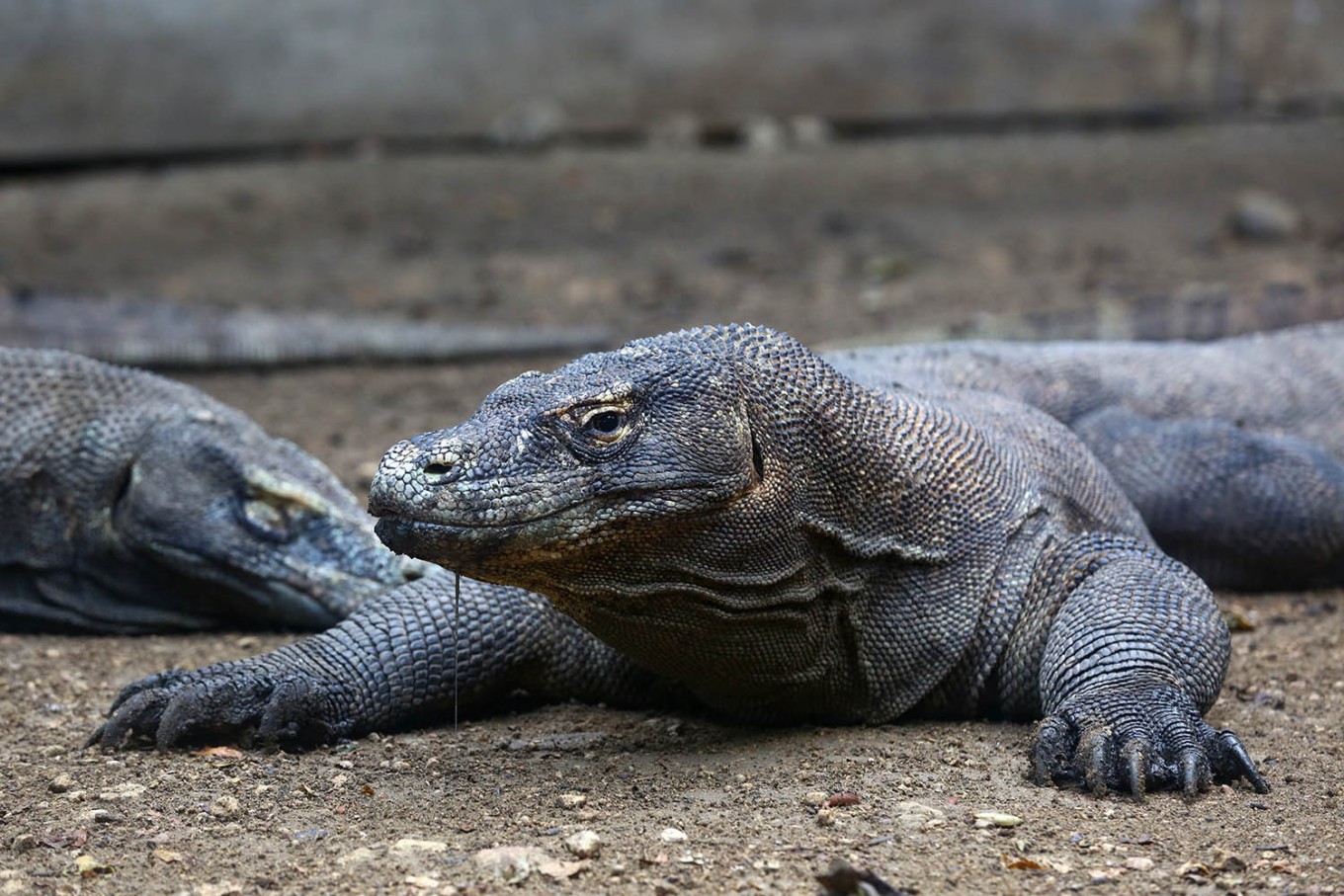Popular Reads
Top Results
Can't find what you're looking for?
View all search resultsPopular Reads
Top Results
Can't find what you're looking for?
View all search resultsCommentary: Keep calm and save Komodo dragons
He said the lizards were not as big as they used to be, attributing this to a decline in the local deer population due to poaching.
Change text size
Gift Premium Articles
to Anyone
L
ast month, East Nusa Tenggara (NTT) Governor Viktor Bungtilu Laiskodat shared a plan to close Komodo National Park for a year, saying that the closure was needed to increase the local population of Komodo dragons and deer, the giant lizard’s natural prey.
He said the lizards were not as big as they used to be, attributing this to a decline in the local deer population due to poaching.
As expected, the plan sparked a debate.
Located in West Manggarai regency, Komodo National Park is among the most popular tourist attractions in Indonesia, particularly for foreign tourists. Based on Tourism Ministry data, the national park welcomes over 10,000 tourists monthly, of whom 95 percent are foreigners.
With such tourism potential, obviously, Tourism Minister Arief Yahya opposed the governor’s plan, calling it “irrelevant”.
In addition to its tourism potential, the national park is also the only place to see Komodo dragons in their natural habitat and its conservation is overseen by the Environment and Forestry Ministry.
Responding to the plan, Environment and Forestry Minister Siti Nurbaya said she would summon representatives from the NTT administration, saying that decisions regarding conservation areas were solely under the jurisdiction of the central government.
Fortunately, all relevant parties involved have agreed to postpone the plan and instead of closing the whole park for a year, NTT Tourism Agency head Marius Ardu Jelamu said last week that the temporary closure would only apply to Komodo Island, the park’s largest island.
Marius also mentioned that the regional and central governments had been working on the plans together and would work on other problems too, such as supervision and control of tourists’ activities
Obviously, there are more issues surrounding the national park than the future of the giant lizards and deer population.
In 2013, I joined a media trip to the national park. Invited by one of the luxury phinisi (a traditional ship that was mainly built by Bugis-Makassar ethnic) companies, I had a great time seeing the natural beauty of Komodo National Park, watching the giant lizards, lounging on the park's empty beaches and seeing the marine life.
Reading the governor’s reasons, I saw no connection between travelers visiting Komodo National Park and the decline of the deer population. I recalled that I was accompanied by a park ranger while seeing the Komodo dragons om Rinca Island. This unsung hero not only shared valuable information about Komodo dragons but also helped prevent tourists from disturbing the giant lizards.
Based on his argument, Viktor realized that the problem was poaching, not travelers.
The problem has been going on for a while. In August 2017, internet user Agus Pambagyo posted a photo of deer carcasses with a caption implying that it had been the result of illegal hunting in Komodo National Park.
Read also: Government to go ahead with Komodo National Park closure in 2020
According to kompas.com, police are investigating the matter.
At the end of 2018, a similar case resurfaced as Indonesian Military (TNI) and National Police personnel in Bima, West Nusa Tenggara (NTB), seized at least nine deer allegedly obtained through poaching on Komodo Island.
Would there be any point of closing the park for tourists if the illegal activity continues to happen?
In addition to poaching, the national park also faces other problems, including trash and minimum supervision.
Last year, The Guardian published an article about trash on Komodo National Park, revealing how travelers on a dive boat had discovered a green turtle entangled in trash and thick fishing net.
The article also includes a statement made by dive master and dive center owner Ed Statham, saying he and his team frequently found boats illegally fishing inside the protected Coral Triangle area. He also addressed the decreasing number of marine patrols.
I was not surprised to read the news as during my trip, I had the luxury of watching a sunset on empty beaches with minimum supervision. Fortunately, the phinisi operator was responsible enough and they cleaned any garbage prior to leaving the beach.
But what about reckless travelers who don’t care about the environment?
With a total area of 1,817 square kilometers, comprising three larger islands, namely Komodo, Rinca and Padar, as well as 26 smaller islands, it’s not easy to manage Komodo National Park and the situation worsens with poor collaboration between regional and central governments, as reflected by the entire hullabaloo.
Protecting Komodo National Park and the endangered species is not a one-man show. All related parties need to come together and put away their personal interests.
The issue surrounding Komodo National Park is only the tip of the iceberg. Let’s not forget that there are other national parks in the archipelago that need similar attention and it's time for regional and central governments to work together before it's too late. (mut)







